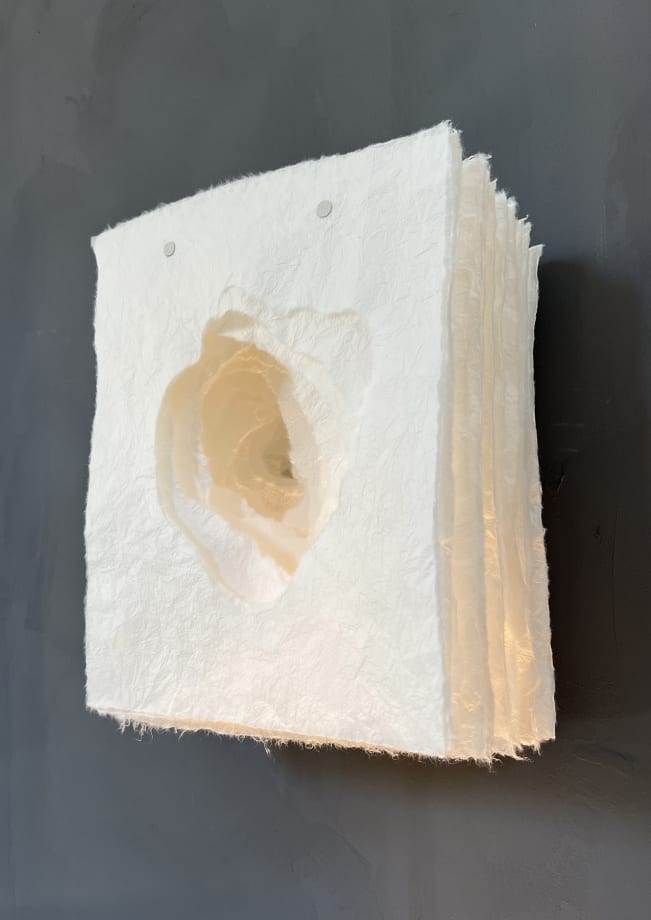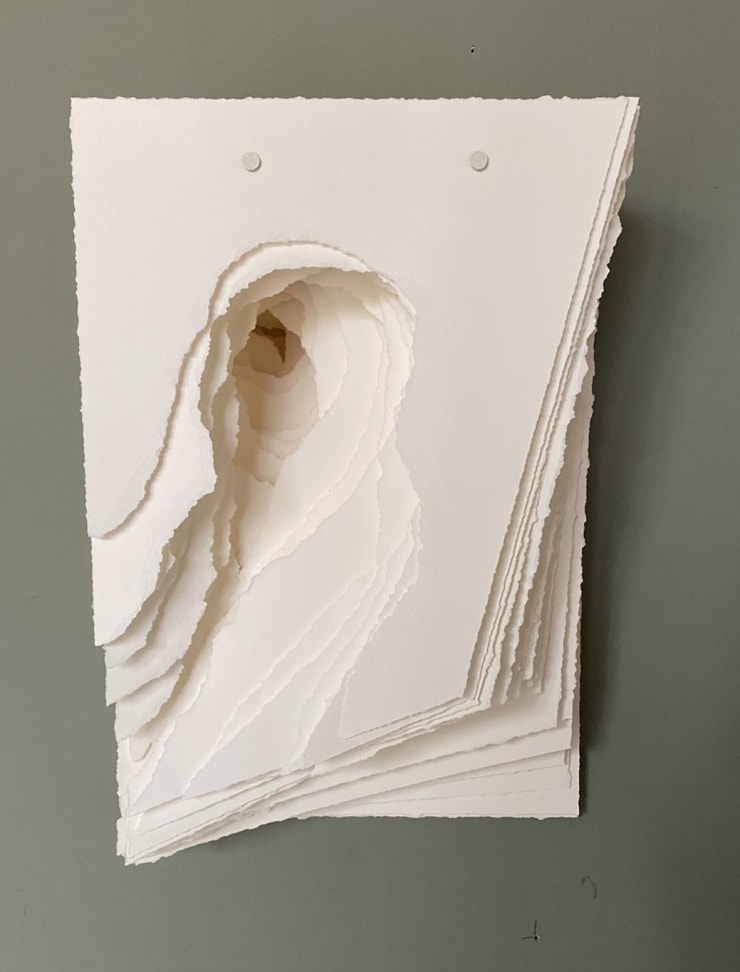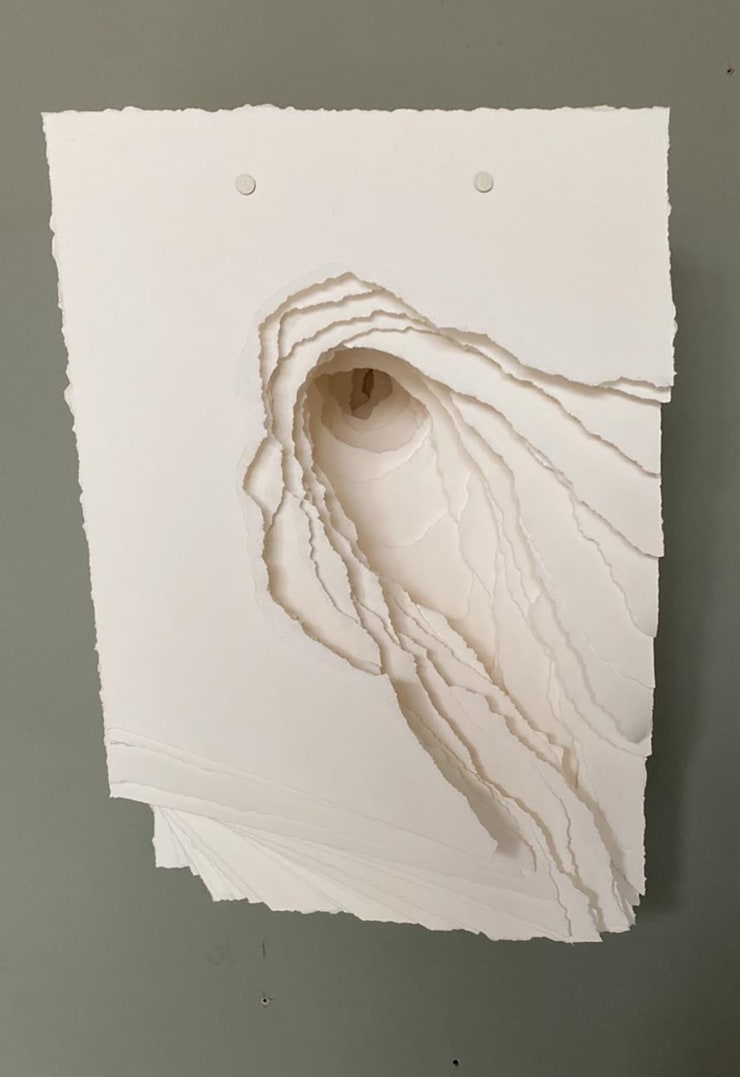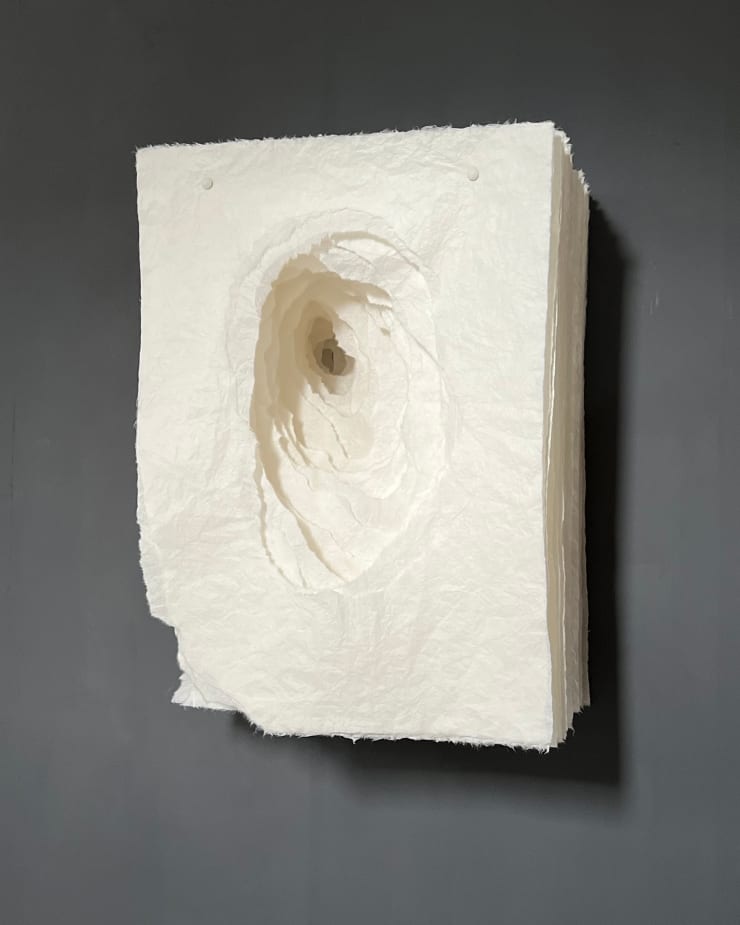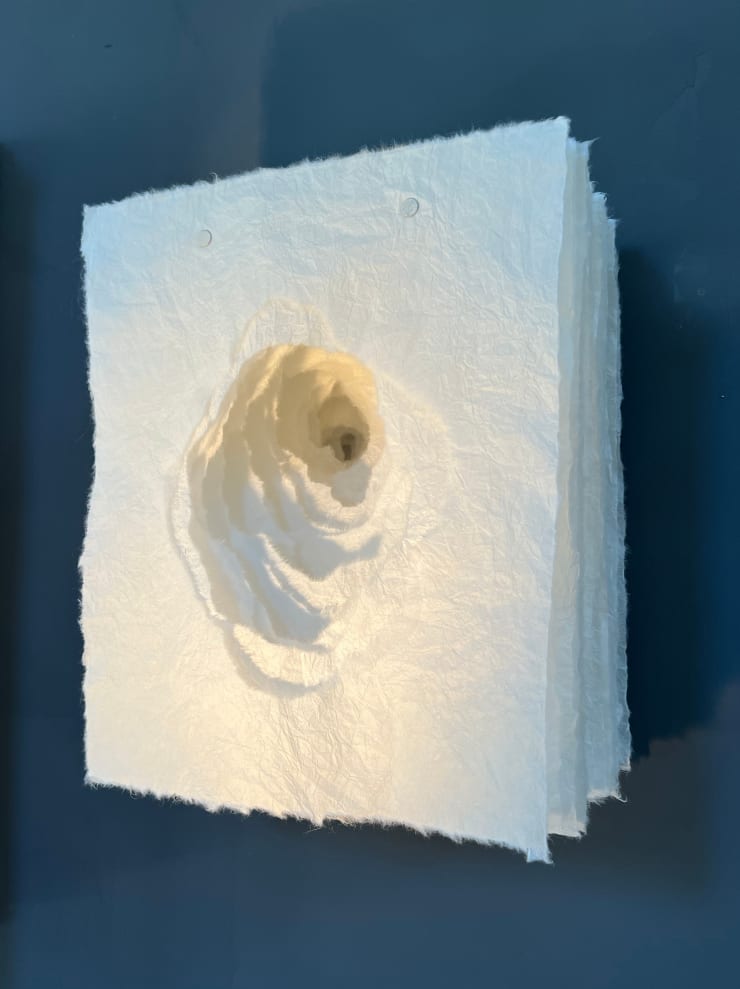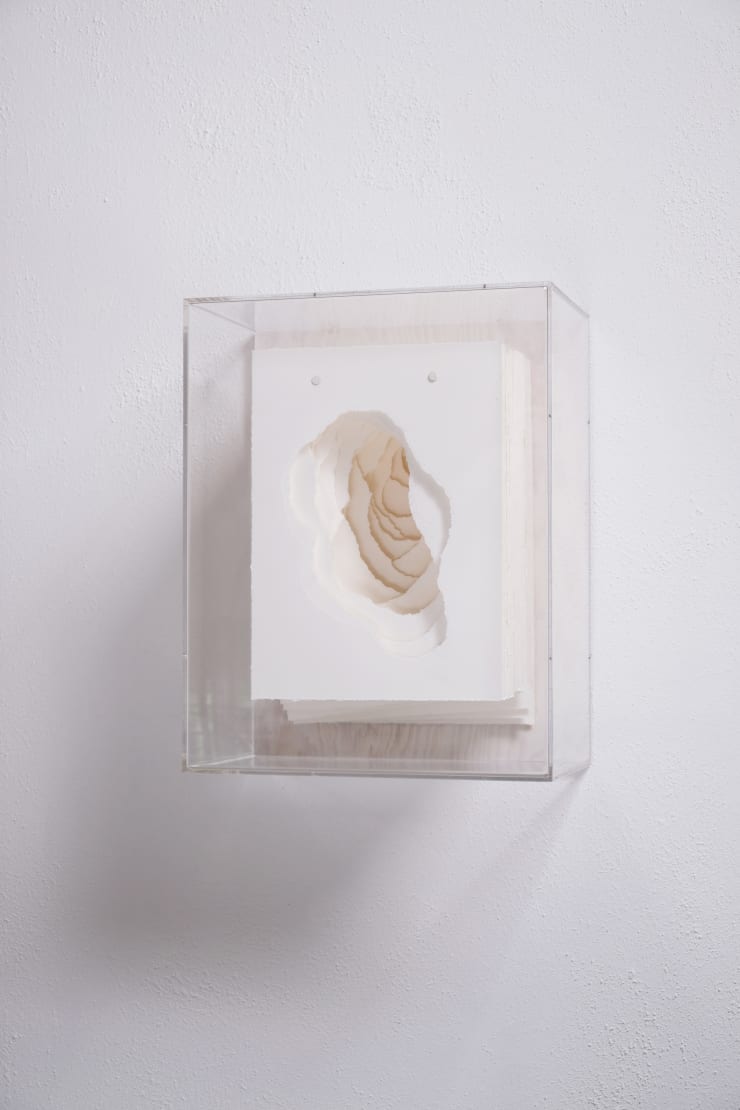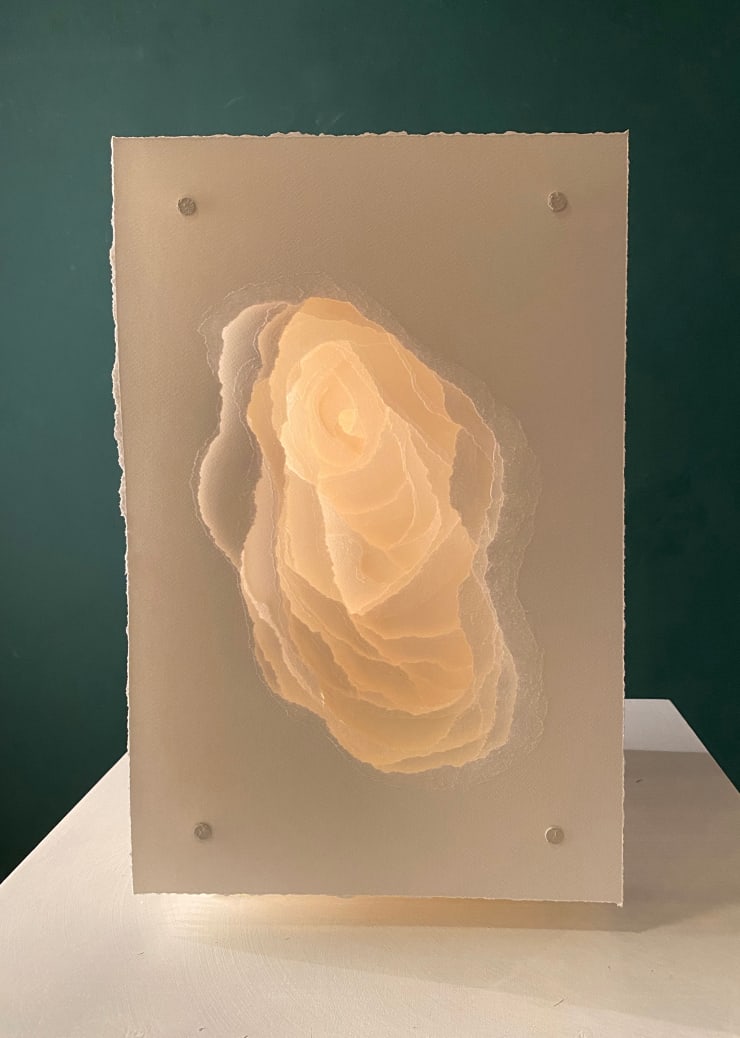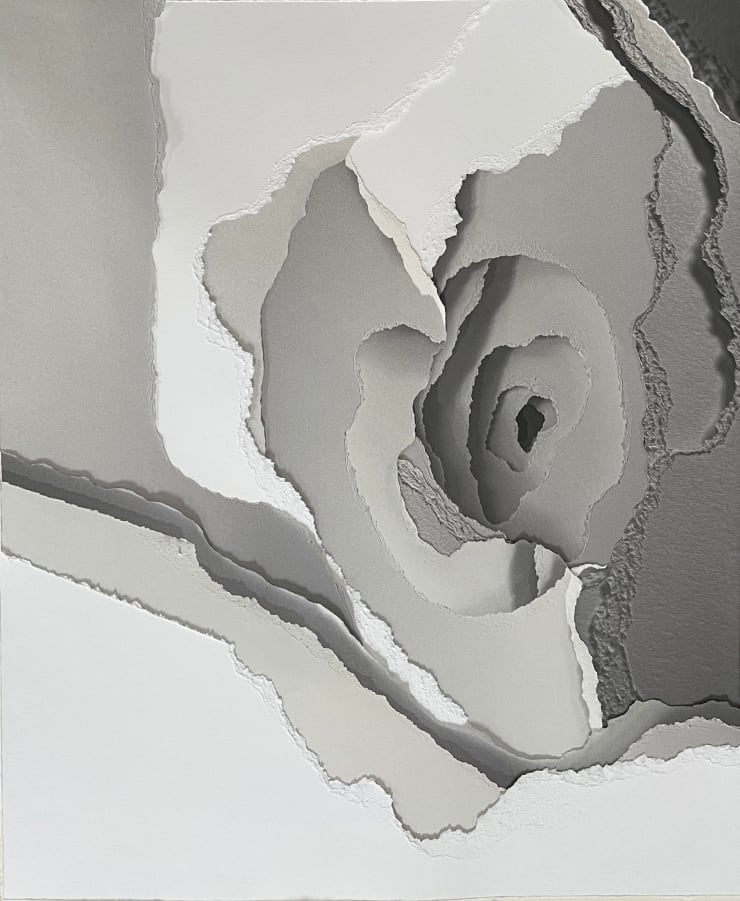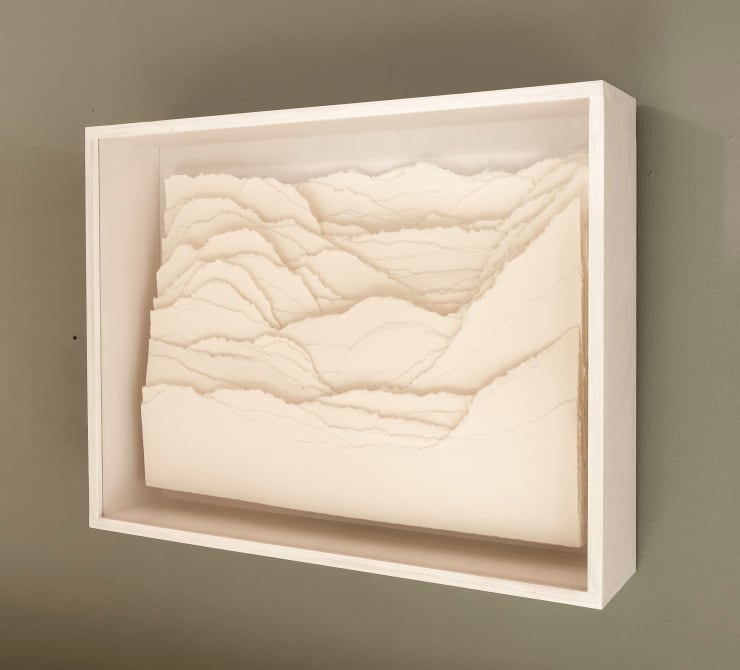Angela Glajcar: Torn Spaces
Past exhibition
Cover
Overview
Friedrichs Pontone is proud to present its first exhibition of the renowned sculptor Angela Glajcar.
Angela Glajcar makes sculpture from paper. Under her hands this humble and familiar material is torn, bent and folded into spatially-sophisticated structures, which echo the monumental contours of landscape. These pieces are suggestive of the geological formations made by the Earth’s elemental processes. Here we see evocations of the undulations of land, the erosions of river delta and the carving out of cave, pit and valley.
Press release
Angela Glajcar makes sculpture from paper. Under her hands this humble and familiar material is torn, bent and folded into spatially-sophisticated structures, which echo the monumental contours of landscape. These pieces are suggestive of the geological formations made by the Earth's elemental processes. Here we see evocations of the undulations of land, the erosions of river delta and the carving out of cave, pit and valley.
An award-winning artist, Glajcar was educated at Der Akademie der Bildenden Künste in Nuremberg Germany. Initially working with wood and metal, she turned to paper as her chosen medium. She stated in an interview that it "completely changed my way of working as an artist." She found its formal properties profoundly exciting and full of possibilities, especially its ability to enclose and define space. The physical properties of paper allow for a lightness and dexterity in handling. At the same time, it is surprisingly tough and robust. Its curved and formed planes are very effective at making expansive enclosures and definitions of boundaries, something that can be seen particularly in Glajcar's site-specific interventions.
The material naturally lends itself to layering and lamination. The sheet is the basic module of production and the tear, the action. The dialogue between the two generates a multiplicity and variety of forms. An important property of paper is its translucency and reflectiveness, something which the sculptor exploits to the full. Light dances across the surfaces of these sculptures; it shines and glows through certain components and refracts off others. In some pieces it seems to emanate from the object itself.
Glajcar's process is transformative. She responds to her raw material and understands its light and fragile nature. She spins a compelling and allusive world out of her subtle manipulations of an everyday essential, paper.
Works
-
 Angela Glajcar, Terforation 2022-030, 2022
Angela Glajcar, Terforation 2022-030, 2022 -
 Angela GlajcarTerforation 2022-064, 2022Hanji paper 34g, torn, metal and plastic mount14 x 12 x 7 in
Angela GlajcarTerforation 2022-064, 2022Hanji paper 34g, torn, metal and plastic mount14 x 12 x 7 in
36 x 30 x 17 cm -
 Angela Glajcar, Terforation 2022-029, 2022
Angela Glajcar, Terforation 2022-029, 2022 -
 Angela GlajcarTerforation 2007-022, 2007Paper 300g, torn, metal and plastic mount55 x 39 ½ x 118 in
Angela GlajcarTerforation 2007-022, 2007Paper 300g, torn, metal and plastic mount55 x 39 ½ x 118 in
140 x 100 x 300 cm -
 Angela Glajcar, Terforation 2022-062, 2022
Angela Glajcar, Terforation 2022-062, 2022 -
 Angela Glajcar, Terforation 2022-063, 2022
Angela Glajcar, Terforation 2022-063, 2022 -
 Angela GlajcarTerforation 2022-058, 2022Paper 200 g, torn, metal and plastic mount, acrylic cover26 x 18 x 8 ½ in
Angela GlajcarTerforation 2022-058, 2022Paper 200 g, torn, metal and plastic mount, acrylic cover26 x 18 x 8 ½ in
66 x 46 x 22 cm -
 Angela GlajcarTerforation 2022-027, 2022Paper 200 g, torn, metal and plastic mount27 x 67 x 14 in
Angela GlajcarTerforation 2022-027, 2022Paper 200 g, torn, metal and plastic mount27 x 67 x 14 in
68 x 170 x 35 cm -
 Angela Glajcar, Terforation 2022-059, 2022
Angela Glajcar, Terforation 2022-059, 2022 -
 Angela GlajcarTerforation 2022-007, 2022Paper 200g, torn, metal and plastic mount19 x 12 x 12 in
Angela GlajcarTerforation 2022-007, 2022Paper 200g, torn, metal and plastic mount19 x 12 x 12 in
48.5 x 30.5 x 30.5 cm -
 Angela Glajcar, Terforation 2022-061, 2022
Angela Glajcar, Terforation 2022-061, 2022 -
 Angela GlajcarTerbloc 2017-029, 2017Paper 200g, torn, glued, screwed together14 x 9 ½ x 6 ½ in
Angela GlajcarTerbloc 2017-029, 2017Paper 200g, torn, glued, screwed together14 x 9 ½ x 6 ½ in
35.5 x 24 x 16.5 cm -
 Angela GlajcarPaperwall 2019-007, 2019Paper 400g, torn, screwed together, glued, wood and metal bracket, framed31 1/2 x 35 1/2 x 2 in
Angela GlajcarPaperwall 2019-007, 2019Paper 400g, torn, screwed together, glued, wood and metal bracket, framed31 1/2 x 35 1/2 x 2 in
80 x 90.2 x 5.1 cm -
 Angela Glajcar, Torn Portrait 2022-041, 2022
Angela Glajcar, Torn Portrait 2022-041, 2022 -
 Angela GlajcarPaperwall 2018-018, 2018Paper 200g, torn, screwed together, glued, framed21 ½ x 19 ½ x 5 ½ in
Angela GlajcarPaperwall 2018-018, 2018Paper 200g, torn, screwed together, glued, framed21 ½ x 19 ½ x 5 ½ in
54.5 x 49.5 x 14 cm -
 Angela GlajcarTerforation 2021-050, 2021Hanji paper 34g, torn, metal and plastic mount14 x 12 x 8 in
Angela GlajcarTerforation 2021-050, 2021Hanji paper 34g, torn, metal and plastic mount14 x 12 x 8 in
36 x 31 x 21 cm -
 Angela Glajcar, Terbloc 2016-003, 2016
Angela Glajcar, Terbloc 2016-003, 2016
